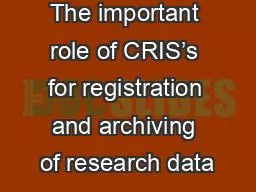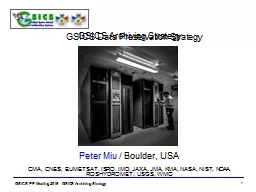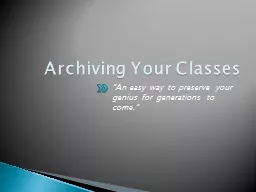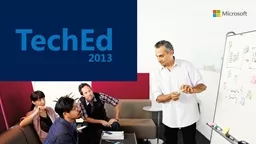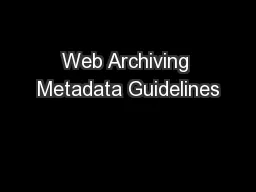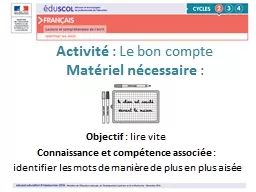PPT-The important role of CRIS’s for registration and archiving of research data
Author : pattyhope | Published Date : 2020-08-05
Case study Radboud University NL in cooperation with the DANS EASY archive Eurocris 2016 conference Presenter Mijke Jetten Radboud University the Netherlands Co
Presentation Embed Code
Download Presentation
Download Presentation The PPT/PDF document "The important role of CRIS’s for regis..." is the property of its rightful owner. Permission is granted to download and print the materials on this website for personal, non-commercial use only, and to display it on your personal computer provided you do not modify the materials and that you retain all copyright notices contained in the materials. By downloading content from our website, you accept the terms of this agreement.
The important role of CRIS’s for registration and archiving of research data: Transcript
Download Rules Of Document
"The important role of CRIS’s for registration and archiving of research data"The content belongs to its owner. You may download and print it for personal use, without modification, and keep all copyright notices. By downloading, you agree to these terms.
Related Documents

